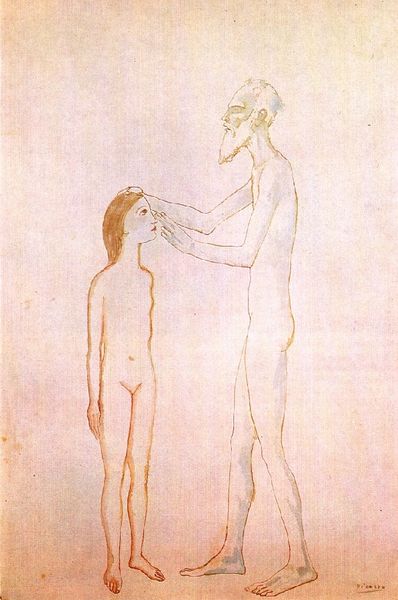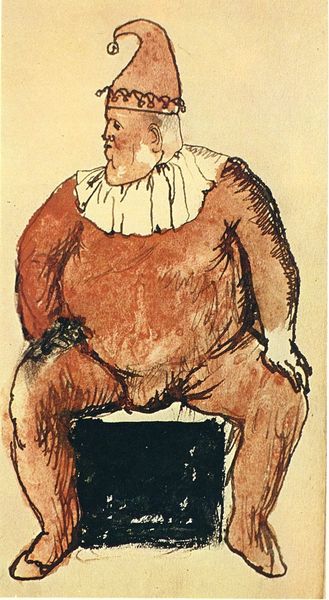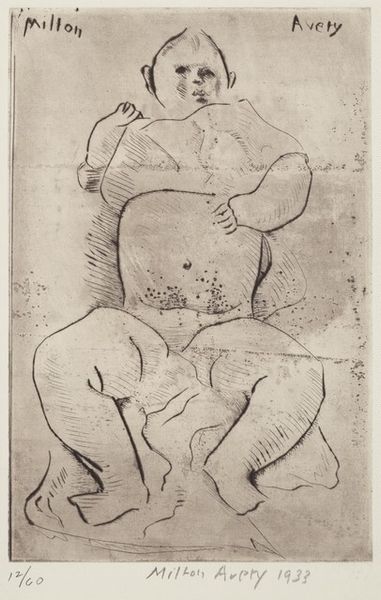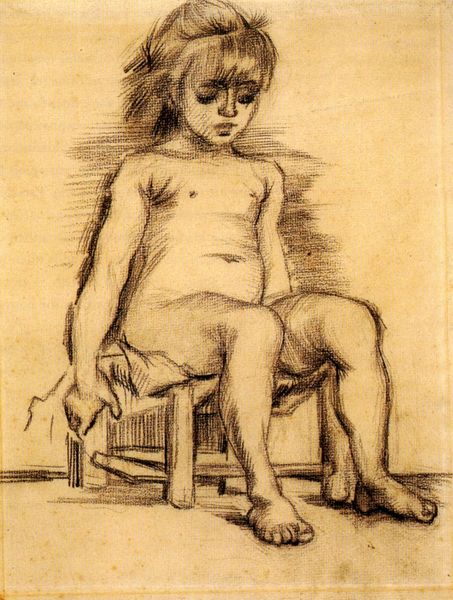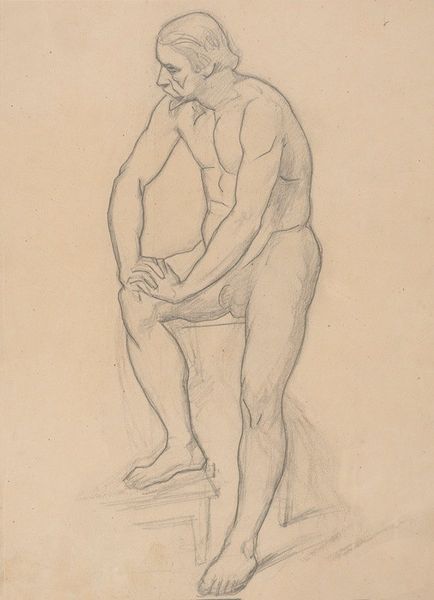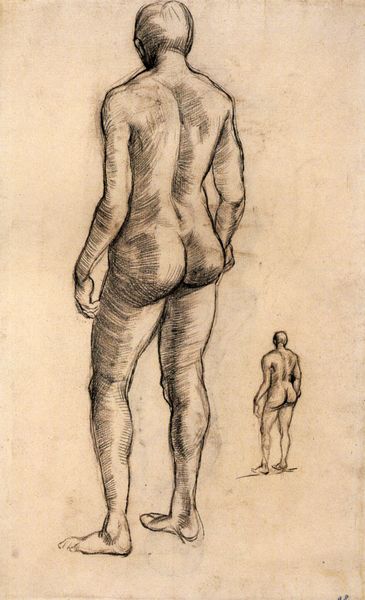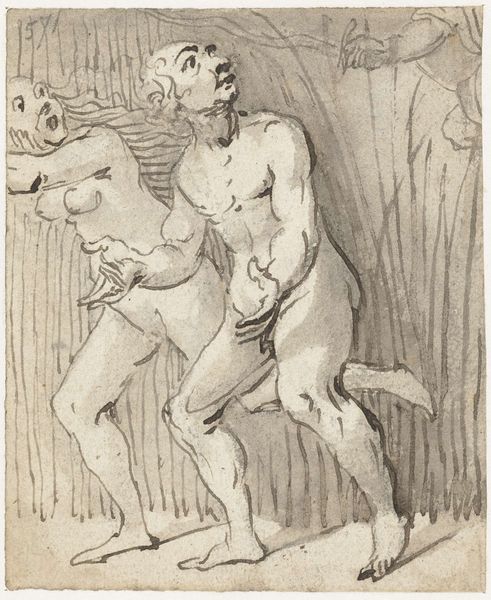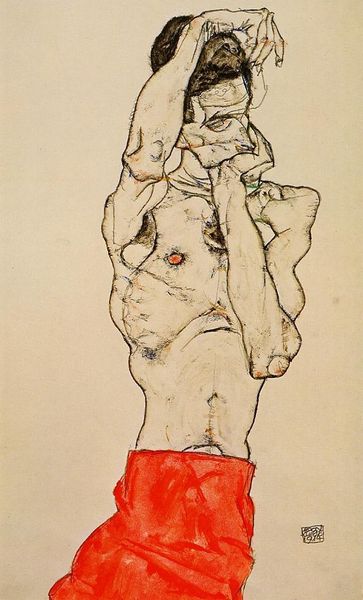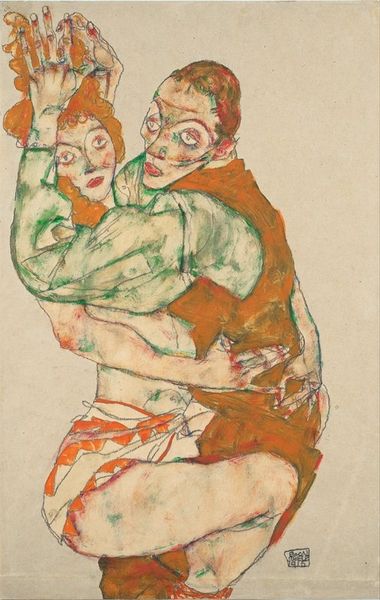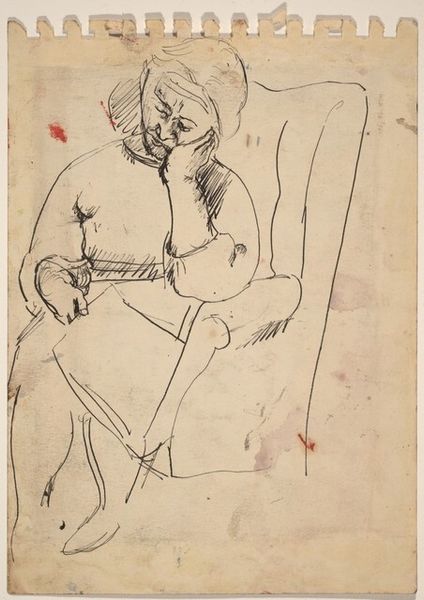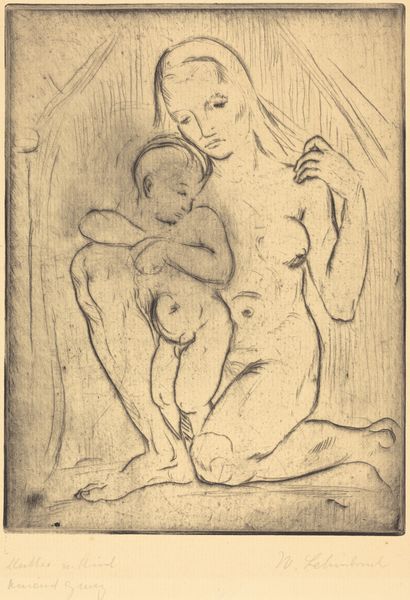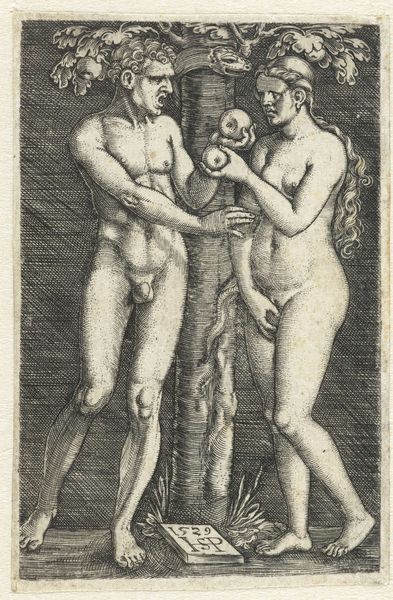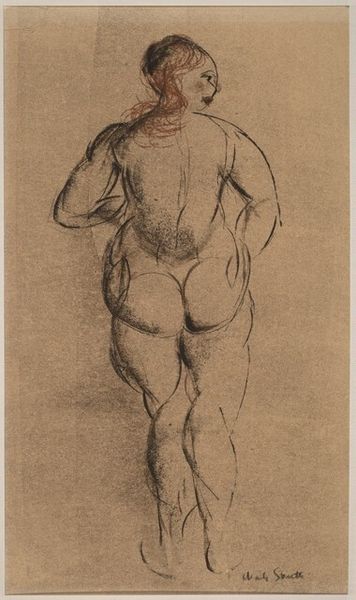
Dimensions: 60 x 21.6 cm
Copyright: Public domain US
Curator: This artwork is Pablo Picasso’s "Young Acrobat and Clown," created in 1905 using pencil and colored pencil. It resides in a private collection. Editor: My first impression? A study in contrasts – the imposing size and reddened tone of the clown set against the youthful pallor and delicate frame of the acrobat. There’s something inherently sad about it, almost melancholic. Curator: Absolutely. The clown figure bears visual links to the "commedia dell'arte" tradition. That specific costume— the loose, draped clothing and the pointed hat—resonates with past archetypes, with both visual and societal implications. It invokes the roles of performer and outsider, particularly within early 20th-century modernism where shifting class and political structures complicated familiar relationships. Editor: It's interesting you mention that – the costume's significance extends beyond mere visual representation. It also reflects emotional complexities inherent in those performing professions, conveying themes of sadness hidden behind the clown's façade, and childhood vulnerability when confronted with early employment. Is that the intention, would you say? Curator: That's a pertinent inquiry. The harlequin image, so persistent throughout art history, frequently appears when broader issues regarding social class are addressed. Picasso seems interested in showing a tenderness amidst that historical archetype. Note the acrobat, pale, frail – is it simply observation or a deliberate act of juxtaposition, a statement of difference? Editor: It is the use of colour as an important symbol and compositional method – an exploration into both the relationship and emotional differences through the characters’ symbolism that impacts viewers in subtle ways. It reminds us that beyond entertainment lie individuals, often enmeshed in struggles far beyond what the public may perceive. Curator: An intriguing insight—linking the emotional impact back to broader social conditions—and a perspective that definitely strengthens the art's complexity in both art-historical terms, and in today’s discussions on representation. Editor: Well, pondering these layered elements has significantly altered how I initially regarded this composition, compelling me to recognize deeper contextual relevance.
Comments
No comments
Be the first to comment and join the conversation on the ultimate creative platform.
